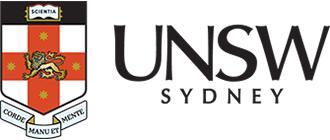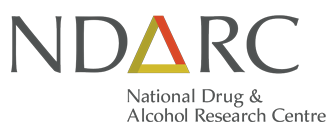
Professor Rebecca McKetin, who is the coordinating principal investigator on the Tina Trial, reflects on the groundbreaking project and provides an insight into site close-out visits.
It is five years since we received funding for the Tina Trial, a multi-site clinical trial of mirtazapine for methamphetamine use. So many people ask me why “Tina”? – every trial needs a name, and that is a street name for crystal meth. Tina is the third and largest trial of mirtazapine for methamphetamine use and it is designed to test whether we can use mirtazapine in routine clinical practice as a safe and effective therapy for methamphetamine use disorder. It is also the largest methamphetamine pharmacotherapy trial conducted in Australia. It has been a major undertaking involving six trial sites across Australia with a centralised electronic platform at UNSW to collate the trial data.
Our additional aim was to build capacity for methamphetamine pharmacotherapy trials, particularly in regional Australia. I think we can safely say we have achieved that, having trained 20 doctors on the trial procedures and having sites in Townsville, Adelaide, Wollongong, Geelong, Perth and Brisbane. But we did learn that many of the smaller regional sites simply didn’t have the resources or confidence to embark on a clinical trial of this kind – more work needs to be done there.
At the moment I am focused on the crucial task of completing the “site close-out” visits for all six trial sites. A site close-out involves archiving files, destroying any leftover trial medication, making sure all medical follow-up of participants is complete, and that all our data are finalised. While there are a lot of checklists and signatures and procedures to follow, I enjoy this part of the job because I get to spend time with our study investigators, researchers, pharmacists and see how things operate on the ground.
Thursday, 15 May: En route to Brisbane for site close-out visits
My flight boards at 17:45. It is 16:38. My partner is driving me to the airport because I hate taxis. We are reversing out of the garage, and I notice I’ve missed a phone call – 11 minutes ago. I know who it is. Tara from Premio. She is calling to tell me that our trophies are ready. By trophy I mean a plaque thanking our trial site health service for participating in the trial. It is a token of our gratitude for all the work they have done. I desperately want to pick up this ‘trophy’ to take to Brisbane for our site principal investigator, Dr Jeremy Hayllar. Principal Investigator, or ‘PI’, is clinical trial lingo for the person running the trial site. In Brisbane that is Dr Jeremy, one of our favourite doctors. Our Brisbane site recruited 100 participants, which was 40 more than they originally committed to. The Brisbane team were always too easy to work with. So, we divert, through peak hour Sydney traffic, to collect Dr Jeremy’s trophy.
Having arrived at the airport with a few minutes to spare, I head up to the Q lounge to find Lucy, the Clinical Trial Coordinator for the Tina Trial. “I didn’t think I was going to see you” she says, looking slightly concerned. I wasn’t sure either, to be honest. “Traffic was heavy”, I say, and show her the trophy that caused the delay. I scoff some nuts (dinner) before heading to the gate, only to be told we cannot board because there is a mechanical fault. “Your fault”, I say to Lucy, who is beset with flight delays. “No, not anymore – I’ve been good lately. Must be you”.
I’ve worked closely with Lucy over the past four years. At first, she would look to me for direction. Now, she practically runs the show. She probably knows me better than my partner and jokes that she is my “work wife”. I “borrowed” Lucy from my colleagues at IMPACT trials in Geelong, and I don’t think they realised that they wouldn’t get her back.
Friday, 16 May: Criss-crossing the city
At 9am the next morning, Lucy and I arrive at Biala Community Health Centre, our Brisbane trial site. Biala is the largest needle and syringe program in Queensland (and possibly the largest in the southern hemisphere). We enter through the back door where there is a run of large yellow syringe disposal bins and vending machines containing sterile injecting equipment. Beside them is a small window. There is a guy standing there talking to someone inside. I overhear him saying “long barrel…,” through the window. It may seem strange to the uninitiated, but these needle and syringe programs are the reason that only an estimated 0.1% of Australians live with HIV.
Inside it is quiet. We make ourselves comfortable on the cushioned orange vinyl chairs in the waiting room and watch the news on the wall-mounted TV. We text the Brisbane trial researcher, Bec (pictured below), to let her know that we have arrived. She comes downstairs from her office floor to meet us in the public clinic area, cheerful as usual. Bec’s role is to manage the day-to-day running of the trial in Brisbane: she does everything from screening the participants, explaining the study procedures, finding participants to do their follow-up assessments, making sure they get their medication, and getting them in to see the doctor for medical appointments.
Bec is a UNSW employee who is physically based at Biala site. It is a trial implementation model that we are trying for the first time, and it seems to work well. I love it because it allows us to centralise the research side of the study. The Tina Trial researchers enter the research assessment data directly into the centralised electronic platform maintained at UNSW. We, the study coordinators at UNSW, have real-time access to the data so we can easily monitor the data quality and the trial progress. Having our trial researchers on site helps make sure everything happens the way it should. It also takes the burden of doing the research assessments off the health service. I couldn’t imagine running the trial any other way.
Bec is a nurse by trade. We rescued her from the emergency department of a major city hospital. She came with plenty of experience of methamphetamine intoxicated patients and psychiatric emergencies, which suited us. Bec is kind to a fault. She is the researcher who will call me on a Friday afternoon, worried about a participant that hasn’t shown for an appointment and won’t answer their phone. The participant is at risk for suicide. It is a tense time. A couple of hours later the participant was found, asleep. We relax.
Our task today is to pack up and file everything at the Biala site. Lucy and I start foraging through Bec’s files. I love this bit of the job, and Lucy is even more avid than I am. We are done in 40 minutes. Amidst the frenzy, Bec shows us a framed picture of a penguin, and tells us how Dr Jeremy set her penguin cards every time she reached a trial recruitment milestone. “I didn’t know that he took the photos”, she says, chuffed. He likes to tour the Antarctic photographing king penguins. We are envious.
We Uber out to the Royal Brisbane and Women’s Hospital, where our trial pharmacist Sunita (pictured below) is based. Finding a pharmacy who can manage clinical trials is always a challenge in our field. Managing trials requires specialist pharmacy skills that are mostly only available in large hospital pharmacies. We are small fish compared to the big oncology trials that dominate their workload. We have little leverage. Thankfully, the Royal Brisbane and Women’s Hospital came to the party and agreed to be our pharmacy for the Tina Trial. It means that Bec needs to trek across Brisbane once a week to collect the trial medication in an Eski. Fortunately, Biala has a small pharmacy on site where we can store the medication ready for participants. This allows us to operate more efficiently.
We finalise the pharmacy close out. Sunita is complementary. She says we are very organised for an investigator-led trial. Most don’t recruit this well, apparently. We stand around awkwardly discussing what to do with the several hundred MEMS Smartcaps that Sunita has handed back to us. They are unusually heavy. Each one contains a small battery and a microchip that records the day and time that the medication bottle has been opened. This is how we know how much trial medication the participants have taken. Sunita kindly provides us with a large plastic disposal bag that we can use to transport the Smartcaps.
Back at Biala, we call Jeremy in for the final sign off on our site close-out visit form. We ask him about his ‘retirement’, which has been looming since we met him. “My wife would be happy if I did”, he explains, “But I like working, so why shouldn’t I?”
Hours later, I’m on the way home. Seat 16D. It is getting bumpy, and I need to put my laptop away. We are in a holding pattern waiting to land at Sydney airport. Friday evening. The usual delays. We are only 30 minutes behind schedule. But I feel for Lucy. I get to go home, and my partner will have cooked steak and broccoli for dinner. There will be nice wine. Lucy has a long drive back home waiting for her. All in a day’s work.
Tomorrow is the weekend, but we will keep going. We have a lot of work to do to get the data ready for data lock – the point where we literally lock the electronic records so no entries can be changed. We then unblind the data to find out who was on mirtazapine and who got the inactive placebo. We then meet with our statistician to run the most important set of analyses. It will be a gut-wrenching moment.
In a week from now we will know the outcome of the trial, and whether mirtazapine can be used safely as a methamphetamine pharmacotherapy in routine clinical practice. I keep telling myself that it doesn’t matter what the answer is. What matters is that we have good quality data to inform clinical decision making. People are already prescribing mirtazapine for methamphetamine use. We equally need to know if it doesn’t work, or if it isn’t safe. We have the data to determine that.
You can read more about the Tina Trial on the project page or by watching the NDARC Webinar below.




